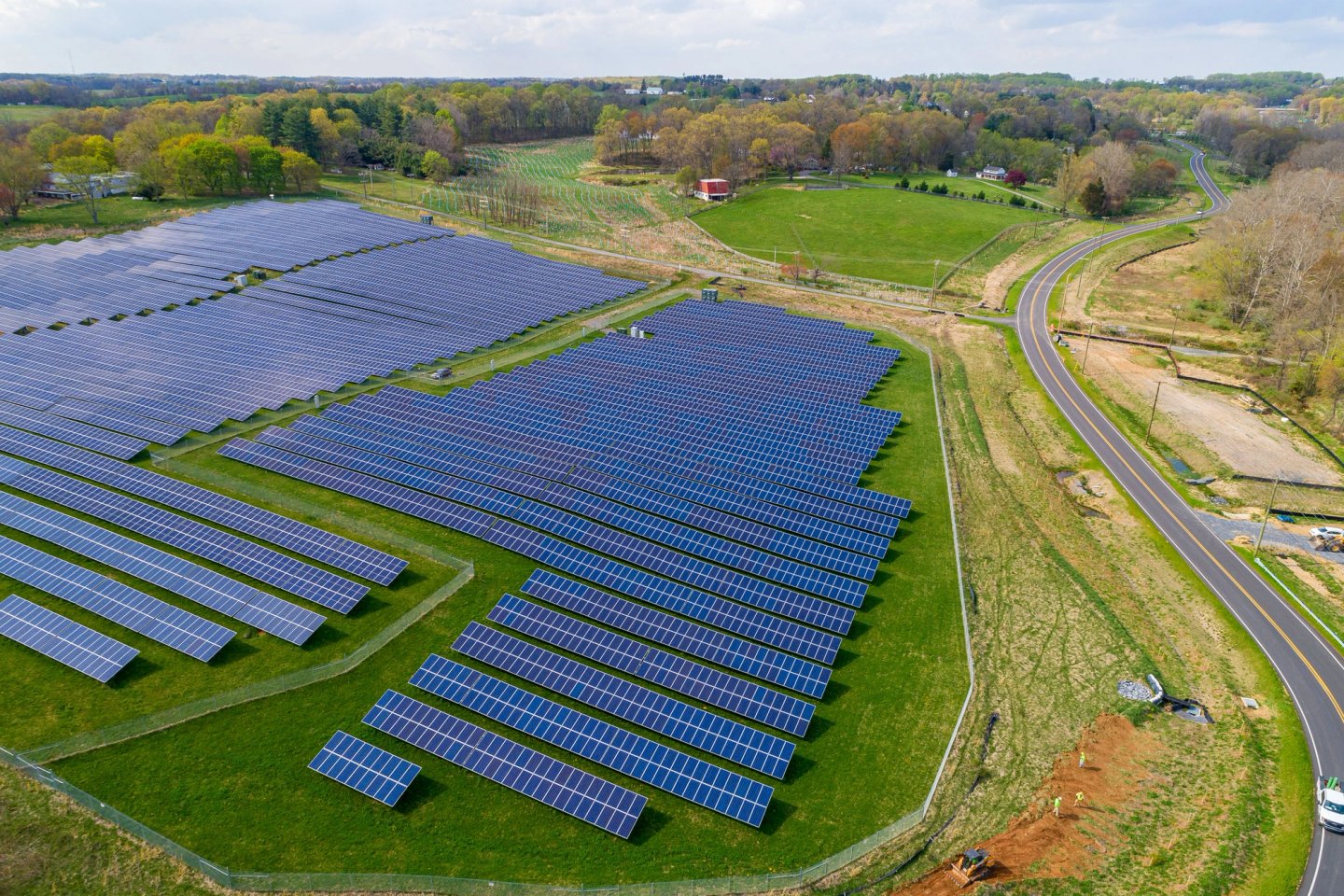
Across the United States, more and more farmers and landowners are discovering that solar energy is not just about clean power—it’s also about financial security and land stewardship. From providing reliable income streams to improving soil health, supporting retirement planning to ensuring land can stay in the family for generations, solar leases can be a powerful tool for landowners looking to balance agriculture with renewable energy.
This guide covers everything you need to know, from agrivoltaics and crop diversification to retirement income, property value impacts, soil restoration, and solar farm decommissioning.
How Solar Diversifies Farm Income
Farming has always come with a level of unpredictability. Weather events, fluctuating commodity prices, and rising input costs can make it difficult to project annual farming revenue. Introducing solar alongside your farming operation can help stabilize this as solar provides predictable, long-term payments.
- Stable revenue: Solar lease payments remain steady year after year, regardless of market swings.
- Risk management: Landowners can rely on solar income to cover operational costs, even during years of low crop yields.
- Flexibility: Lease payments can support investments in new machinery, debt reduction, or diversification of farm operations.
Solar as a Secondary Revenue Stream
Perhaps the most compelling benefit of solar leases is income diversification. For many farmers, lease payments from solar projects can match or even exceed the profit margins of certain crops.
- Consistent annual payments: Lease terms typically run from 20–40 years.
- Supplemental revenue: Solar lease income allows farms to reinvest, pay off loans, or save for the future.
- Scalable opportunity: Larger parcels of land can generate significant annual income.
This is particularly valuable for small and mid-sized farms, where margins are slim and financial stability is essential.
Solar and Retirement Planning
Landowners often view solar leases as part of their retirement strategydue to the long-term nature of the lease agreements.
- Guaranteed payments: Lease agreements provide a steady stream of passive income for decades.
- Reduced financial stress: Solar income can supplement pensions, Social Security, or other investments.
- Preserving family legacy: With solar income covering operational costs, farmland can stay in the family without being sold
Solar’s Impact on Land Value
A frequent concern among landowners is whether solar panels affect property value.There is a common misconception that solar will reduce land value. However, studies show that:
- Solar projects do not reduce property values of nearby land.
- In some cases, solar leases can increase overall land value due to long-term financial agreements.
- Solar farms often contribute to local tax revenue, which can improve schools, roads, and community services.
Community support matters. Many neighbors benefit indirectly through lower utility rates, local job creation, and cleaner air. Far from harming property values, solar can strengthen the economic health of entire regions.
Agrivoltaics: Farming with Solar Panels
One of the most exciting innovations in clean energy is agrivoltaics, which is the practice of combining solar power generation with agriculture. Instead of choosing between crops and solar, landowners can benefit from both.
Benefits of Agrivoltaics
- Crop diversification: Shade-tolerant crops such as lettuce, spinach, or wheat can thrive under panels.
- Livestock grazing: Sheep are often used for vegetation management, reducing the need for mowing while providing farmers with another revenue source.
- Soil protection: The shade of solar panels reduces water evaporation, helping maintain soil moisture.
- Climate resilience: Crops grown under panels are more protected from heat stress and extreme weather.
Agrivoltaics not only boosts productivity but also positions landowners as pioneers in sustainable agriculture. Learn more in our dedicated Agrivoltaics blog.
Solar and Soil Health: Restoring the Land
Solar installations can also serve as a tool for land restoration.
- Pollinator habitats: Oftentimes, native grasses and wildflowers are planted around solar farms, attracting bees, butterflies, and birds.
- Reduced erosion: Permanent groundcover stabilizes the soil and reduces runoff.
- Improved fertility: Resting the land from intensive tilling and pesticides helps restore nutrients over time.
By the end of a lease, land can be healthier and more productive for agricultural use than before the solar project began.
Solar Farm Decommissioning
What happens at the end of a solar lease? There is a common misconception that solar panels will “poison the land” and leave it unusable after decommissioning. This is simply not true.
- Safe removal: At the end of the lease, all solar panels, wiring, and infrastructure are completely removed by the developer.
- Recycling and reuse: Many components are recycled or repurposed.
- Land restoration: Contracts typically guarantee that the land will be returned to its original condition.
Most leases require the developer to set aside financial assurances, ensuring decommissioning is completed responsibly and at no cost to the landowner. At Nexamp, we always restore the land back to its original condition upon decommissioning.
Looking ahead: Solar + Storage
Energy storage systems have been gaining momentum in the last year, with newer projects pairing solar farms with battery systems.
- Higher lease rates: Storage facilities can increase the value of land leases.
- Grid stability: Storage ensures solar energy can be delivered even after sunset.
- Community resilience: Battery storage supports local reliability during extreme weather events.
This trend is expected to grow, making solar leases even more attractive in the future.
Final Thoughts
For farmers and rural landowners, solar offers an opportunity for income stability, solar restoration, retirement security, and offers local community benefits too. It’s about far more than just electricity.
By working with a trusted solar partner like Nexamp landowners can ensure that their property is not only productive today but also prepared for generations to come.